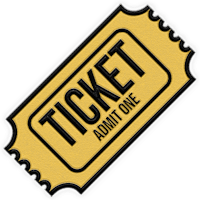The truth about SEO as a practice is that it’s constantly growing, changing, and innovating. As a company, we are continuously improving our platform to ensure your content performs well in search. In this article, we want to help you think of SEO for your experiences and share a few ways you can make sure your content performs well in search too!

Think of SEO in two buckets: Technical & Behavioral
Technical
The best-optimized page in the world could be a blog post with 3000 words on it. Does that mean this is the best-performing content just because Google says it ranks the best?
On day zero of content becoming live, Google has no traffic to go off of when understanding whether a page that’s been created is quality or not. With that being said, Google reads what’s on the pages, and tries to index and understand what the topics are and what the topics talk about. Then Google tries to anticipate what the performance will be, and they do this by measuring load time. The better the load time = The better the initial ranking.
Studio uses progressive image loading, which shows lower-resolution images first, then higher-resolution images in the background.

We also use lazy loading to improve load times for the user. This ensures everything above the fold loads first, then it will start loading everything else.

Studio also uses our CDN (Content Delivery Network) to decide what image to put out on the page or initially put a lower resolution image to ensure the content on the page is loading.
While better load times help your initial ranking, there are other things Google also takes into account, like account traffic and off-page SEO. For example, if you have an article written that links to the experience or links on a website that drives to the experience. The additional account traffic and off-page SEO help Google rank the content even higher! Google knows if traffic comes from outside the domain, direct, organic, etc. All of this traffic helps rankings if they’re from reputable sources, different sources, traffic from referrals, etc.
Google will also assess time on page and bounce rates for SEO.
Behavioral
The longer the experience is up on Google, Google starts to use “behavioral clues”. In other words, they use their audience as a feedback mechanism to determine if their initial read was correct or not. If a user lands on this page and then goes back to the search page – Google takes that as the page is not informative.
If a Studio experience is performing at 80% of a hardcoded page, but you can create 10x the content with Studio, you’ll get more SEO in the long run. We acknowledge Studio SEO is not always an additive if you hand-coded it. However, based on what we know, if you are creating a better user experience and are effectively telling their story, Studio content will perform better in the long run. You will see higher engagement, dwell times, and lower bounce rates – which in turn would outperform any static experiences that have already been created online.
There are a few things you can do to help optimize your Studio experiences for search engines that can also align with your current SEO strategy. Below are two things helpful to know as you’re creating in Studio:
Use the Live Text Tool in Studio – This ensures all text is crawlable by search engines. You should avoid using images of text as much as possible. (Logos are okay!)
Add Alt Tags – These are important for content that enhances the story. An alt tag is the text that describes an image- adding it to any graphic or trend in your experience can help Google read those images.
Check out the full SEO Checklist for Studio Content article to make sure you are accounting for all aspects of search engine optimization within Studio.






